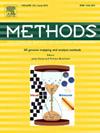结构光扫描探针配置对微笑状态下颌面部区域三维扫描精度的影响:体外研究
IF 4.3
3区 生物学
Q1 BIOCHEMICAL RESEARCH METHODS
引用次数: 0
摘要
目前,单单元、双单元和三单元结构光三维扫描技术已成为主要的面部扫描方法。然而,不同单元策略对面部扫描精度的影响尚不清楚。建立了微笑状态下的标准化三维人脸模型。利用坐标测量仪和工业级激光三维扫描仪获得关键点参考坐标和三维数据。利用三种结构光扫描技术(单、双、三单元)捕获模型的三维信息。比较了三种扫描策略的线性距离偏差和三维表面偏差(真实度和精度)。在线性距离测量的20个真实度指标和22个精度指标中,三单元扫描策略的偏差最小(P <;0.05)。此外,对于整个面部扫描,三单元策略的准确性(真实度:0.1607±0.0201 mm,精度:0.0161±0.0112 mm)显著低于单单元和双单元策略,特别是在口腔和颌面美学分析的关键区域,如眶、鼻和口周区域。三单元结构光扫描策略显著提高了面部3D扫描的准确性,特别是在从中线和口周区域获取3D面部信息时。体外实验表明,三单元结构光三维扫描策略有效提高了面部扫描的准确性,特别是在口腔颌面美学区域。该方法为美学修复的术前规划和术后评价提供了基础和支持。本文章由计算机程序翻译,如有差异,请以英文原文为准。
The influence of structured light scanning probe configuration on the 3D scanning accuracy of the maxillofacial region in a smiling state: An in vitro study
Currently, single-unit, dual-unit, and triple-unit structured light 3D scanning technologies have become the predominant facial scanning methods. However, the impact of different unit strategies on facial scanning accuracy remains unclear. A standardized 3D facial model in a smiling state was established. Key point reference coordinates and 3D data were obtained using a coordinate measurement instrument and an industrial-grade laser 3D scanner. Three structured light scanning techniques (single-, dual-, triple-unit) were utilized to capture the 3D information of the model. Linear distance deviations and 3D surface deviations (trueness and precision) of the three scanning strategies were compared. The triple-unit scanning strategy exhibited the lowest deviation among 20 trueness indicators and 22 precision indicators for linear distance measurements (P < 0.05). Furthermore, the accuracy of the triple-unit strategy (trueness: 0.1607 ± 0.0201 mm, precision: 0.0161 ± 0.0112 mm) for overall facial scanning was significantly lower than that of the single-unit and dual-unit strategies, particularly in critical regions for oral and maxillofacial aesthetic analysis, such as the orbital, nasal, and perioral regions. The triple-unit structured light scanning strategy significantly enhances the accuracy of facial 3D scanning, particularly when acquiring 3D facial information from the midline and perioral regions. This in vitro study demonstrates that the triple-unit structured light 3D scanning strategy effectively improves the accuracy of facial scanning, especially in the oral-maxillofacial aesthetic regions. This approach provides a foundation and support for both preoperative planning and postoperative evaluation of aesthetic restoration.
求助全文
通过发布文献求助,成功后即可免费获取论文全文。
去求助
来源期刊

Methods
生物-生化研究方法
CiteScore
9.80
自引率
2.10%
发文量
222
审稿时长
11.3 weeks
期刊介绍:
Methods focuses on rapidly developing techniques in the experimental biological and medical sciences.
Each topical issue, organized by a guest editor who is an expert in the area covered, consists solely of invited quality articles by specialist authors, many of them reviews. Issues are devoted to specific technical approaches with emphasis on clear detailed descriptions of protocols that allow them to be reproduced easily. The background information provided enables researchers to understand the principles underlying the methods; other helpful sections include comparisons of alternative methods giving the advantages and disadvantages of particular methods, guidance on avoiding potential pitfalls, and suggestions for troubleshooting.
 求助内容:
求助内容: 应助结果提醒方式:
应助结果提醒方式:


